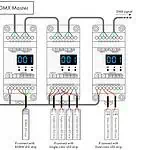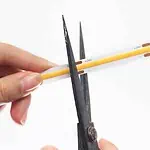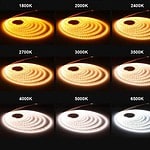Dimming is the process of varying the light output of a light source. This is done to set the ambience or to save energy when full light output is not really needed. Most of the dimming systems used before LEDs or even today are designed for incandescent light bulbs. These systems usually use forward-phase and reverse-phase dimming methods in which the dimmer interrupts or chops the AC line input to reduce the power going into the driver. With less input power, there will be less output on the driver, and the brightness of the light is decreased.
The most commonly heard dimming keywords in LED commercial lighting are DMX, DALI, 0/1-10V, thyristor (TRIAC), WIFI, Bluetooth, RF, and Zigbee. These are the input signals of the dimming power supply. The selection of different input signals is mainly due to the consideration of the environment (installation, wiring), function, cost, and flexibility of later expansion. The quality of the dimming effect is mainly determined by the output dimming method of the dimming power supply, not the input dimming method.
The output dimming methods of dimming power supply are mainly divided into two types, Constant Current Reduction (CCR) and Pulse Width Modulation (PWM) (also known as Analog Dimming).

First, a clarification: actually, all LED strips are dimmable.
When you shop for common household LED lights like A-style bulbs, you may often see NOT DIMMABLE listed under the product description. Some LED bulbs are not dimmable because the electrical circuitry inside the LED bulb is not designed to interpret the dimming signal of a wall dimmer, which, in turn, is/was intended for a traditional incandescent bulb.
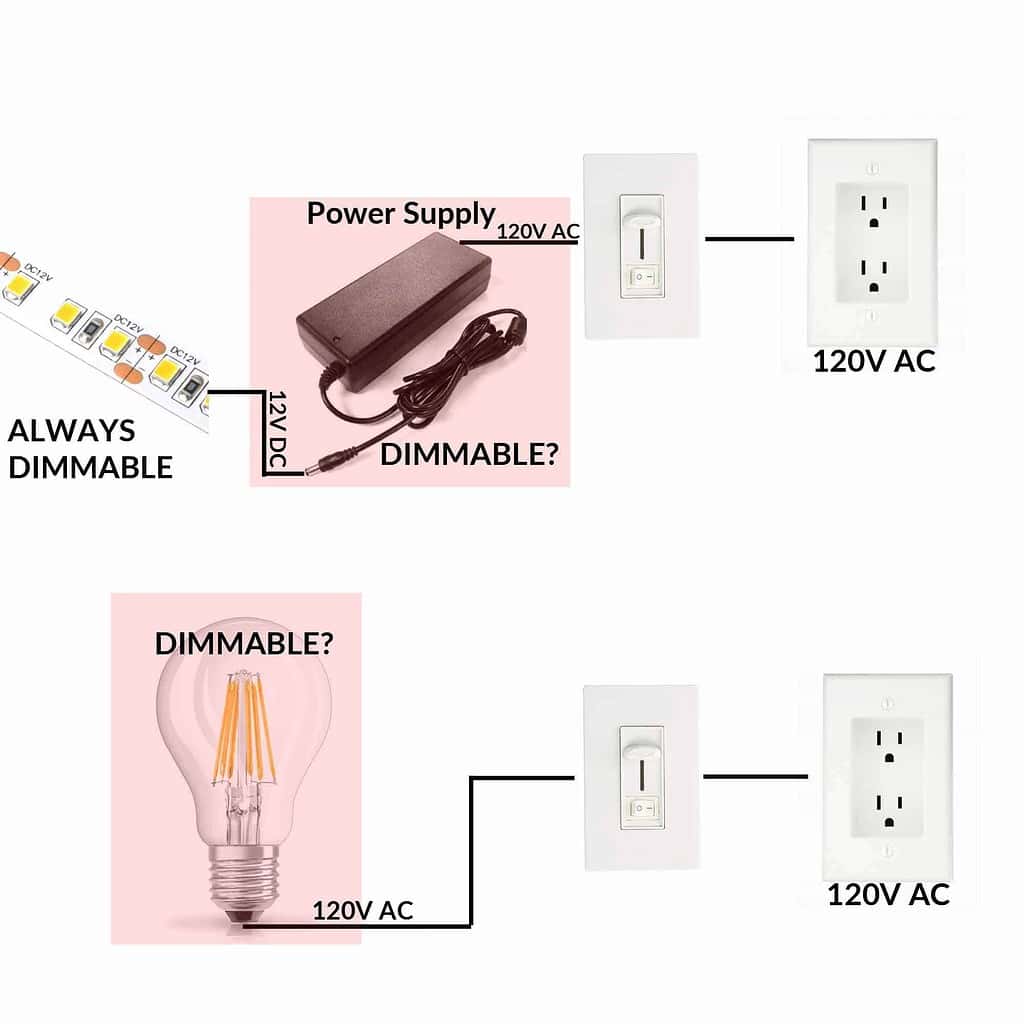
On the other hand, LED strips are not designed to be connected directly to high voltage (e.g. a 120V AC wall socket), and require a power supply to convert the higher voltage AC into a lower 12V or 24V DC voltage.
Therefore, if a wall dimmer is involved, it must first “talk” to the power supply before any dimming can happen at the LED strip. Therefore, the dimmable/not dimmable question depends on the power supply unit, and whether it can interpret the dimming signal produced by the wall-dimmer.
On the other hand, virtually all LED strips (as in, the strip itself) are dimmable. Given the appropriate DC electrical signal (typically PWM), any LED strip’s brightness can be freely adjusted.
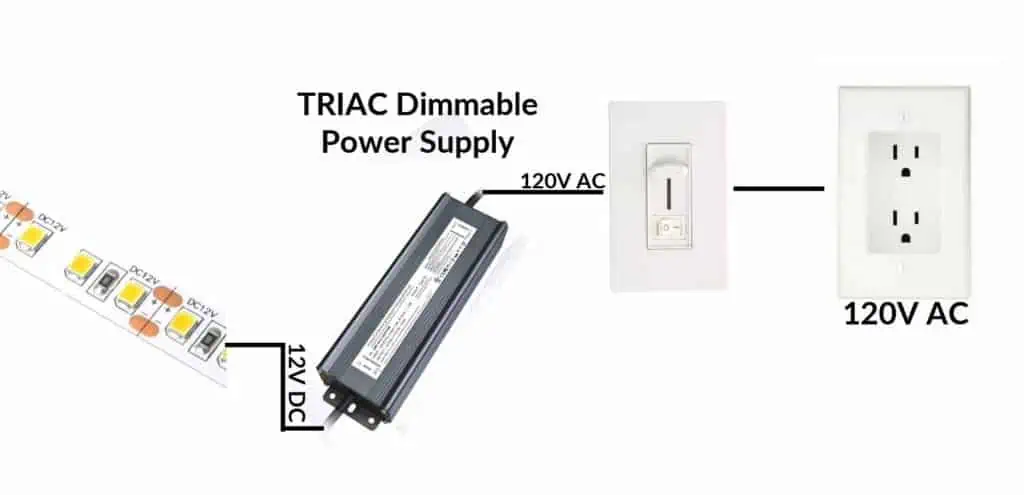
Please note that there are generally two types of led strips on the market, constant current and constant voltage. Their requirements for dimming power supply are different. Please refer to the table below:
| LED Strip Type | Constant Current Reduction (CCR) | Pulse Width Modulation (PWM) |
| Constant Voltage LED Strip | Work | Work |
| Constant Current LED Strip | Fail | Work |
What controls the brightness of an LED?
The amount of current flowing through an LED determines its light output. If we look at the graph above, we will see that changing the voltage also changes the current through the LED, making us think of dimming an LED by increasing or decreasing the voltage across it. However, we can also see that the region where we can change the voltage without getting too much current is tiny. Also, the current is not predictable as well, as the brightness.
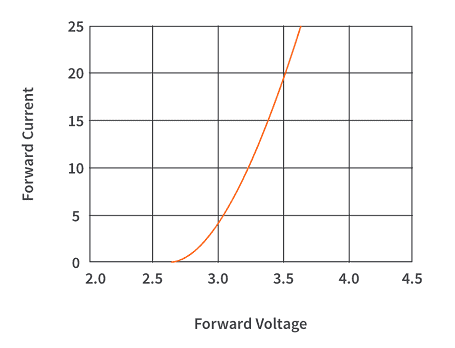
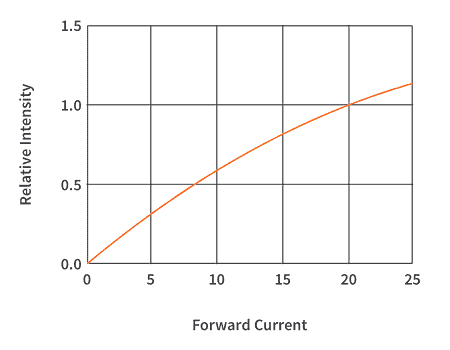
If we scan some LED datasheets, we can see that the luminous intensity of an LED depends on the forward current. Their relationship is almost linear too. So in dimming LEDs, we take the forward voltage as a fixed value and control the current instead.
LED Dimming Methods
All LED devices require a driver to be dimmed, and there are two standard methods that drivers use to dim LEDs: Pulse Width Modulation and Constant Current Reduction (also known as Analog Dimming).
Pulse Width Modulation (PWM)
In PWM, the LED is turned ON and OFF at its rated current at a high frequency. The rapid switching is high enough for the human eye to see. What determines the brightness level of the LED is the duty cycle or the ratio of the time when the LED is ON and the total time of one complete cycle.
Advantages:
- Provides a very precise output level
- Suitable for applications that need to maintain certain characteristics of the LED such as color, temperature, or efficiency
- Broad dimming range – can decrease light output to values of less than 1 percent
- Avoids color shift by operating the LED at its recommended forward voltage/forward current operating point
Disadvantages:
- Drivers are complex and expensive
- Since PWM uses fast switching, the fast-rising edge and falling edge of each switching cycle produce unwanted EMI radiations
- The driver might have performance issues when running with long wires since the stray characteristics of the wire (capacitance and inductance) can interfere with the fast edges of the PWM
Duty Cycle
The term duty cycle describes the proportion of ‘on’ time to the regular interval or ‘period’ of time; a low duty cycle corresponds to low power, because the power is off for most of the time. Duty cycle is expressed in percent, 100% being fully on. When a digital signal is on half of the time and off the other half of the time, the digital signal has a duty cycle of 50% and resembles a “square” wave. When a digital signal spends more time in the on state than the off state, it has a duty cycle of >50%. When a digital signal spends more time in the off state than the on state, it has a duty cycle of <50%. Here is a pictorial that illustrates these three scenarios:

Frequency
Another integral aspect of the pulse width modulation(PWM) signal is its frequency. The PWM frequency stipulates how fast the PWM signal completes a period, where the period is the time taken for the signal to go on and off.

Reconciling the duty cycle and frequency of the PWM signal creates the possibility of a dimmable LED driver.
Constant Current Reduction (CCR)
In CCR, the current flows continuously through the LED. So the LED is always ON, not like in PWM where the LED is always turned ON and OFF. The brightness of the LED is then varied by changing the current level.
Advantages:
- Can be used with applications with strict EMI requirements and remote applications where long wire runs are used
- CCR drivers have higher output voltage limit (60 V) than drivers that use PWM (24.8 V) when classified as UL Class 2 drivers for dry and damp locations
Disadvantages:
- CCR is not suitable for applications where dimming light levels below 10 percent is desired because at very low currents, LEDs do not perform well and the light output can be erratic
- Low drive currents can result into inconsistent color
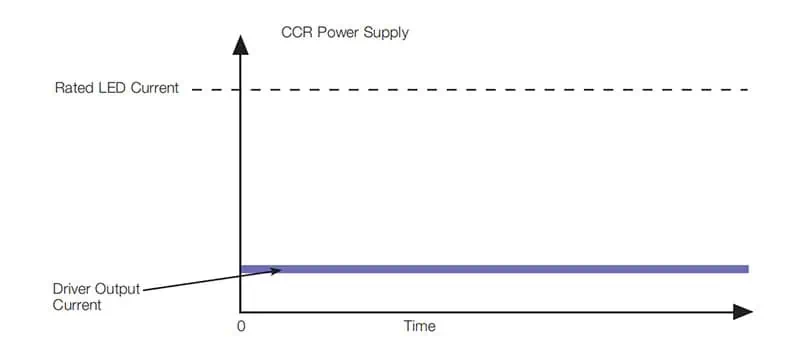
DMX512 Dimming
DMX512 is a standard for digital communication networks that are commonly used to control lighting and effects. It was originally intended as a standardized method for controlling stage lighting dimmers, which, prior to DMX512, had employed various incompatible proprietary protocols. It quickly became the primary method for linking controllers (such as a lighting console) to dimmers and special effects devices such as fog machines and intelligent lights.
DMX512 has also expanded to uses in non-theatrical interior and architectural lighting, at scales ranging from strings of Christmas lights to electronic billboards and stadium or arena concerts. It can now be used to control almost anything, reflecting its popularity in all types of venues.

DALI Dimming
The Digitally Addressable Lighting Interface (DALI) originated in Europe and has been heavily implemented for many years in that part of the world. It is now becoming more popular in the United States as well. The DALI standard allows for digital control of individual fixtures via a low voltage communication protocol that can send information to light fixtures while also receiving data from the fixtures, making this a valuable tool for building information monitoring systems and controls integration. DALI allows for addressing individual fixtures, with up to 64 addresses possibly organized into 16 different control zones. DALI communication is not polarity sensitive, and a variety of connection configurations are possible with this protocol. A typical DALI wiring diagram is shown below:
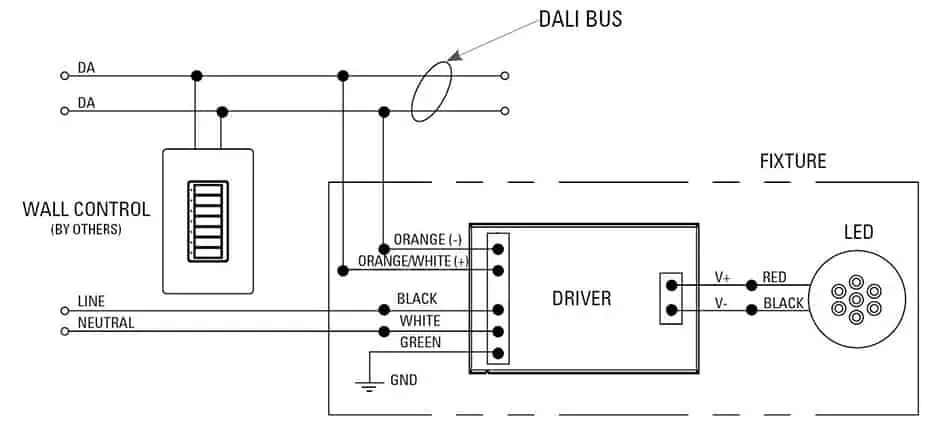
0/1-10V Dimming
The first and simplest electronic lighting control signaling system, low voltage 0-10V dimmers, use a low voltage 0-10V DC signal connected to each LED power supply or Fluorescent ballast. At 0 Volts, the device will dim to the minimum light level allowed by the dimming driver, and at 10 Volts the device will be operating at 100%. A typical 0-10V wiring diagram is shown below:
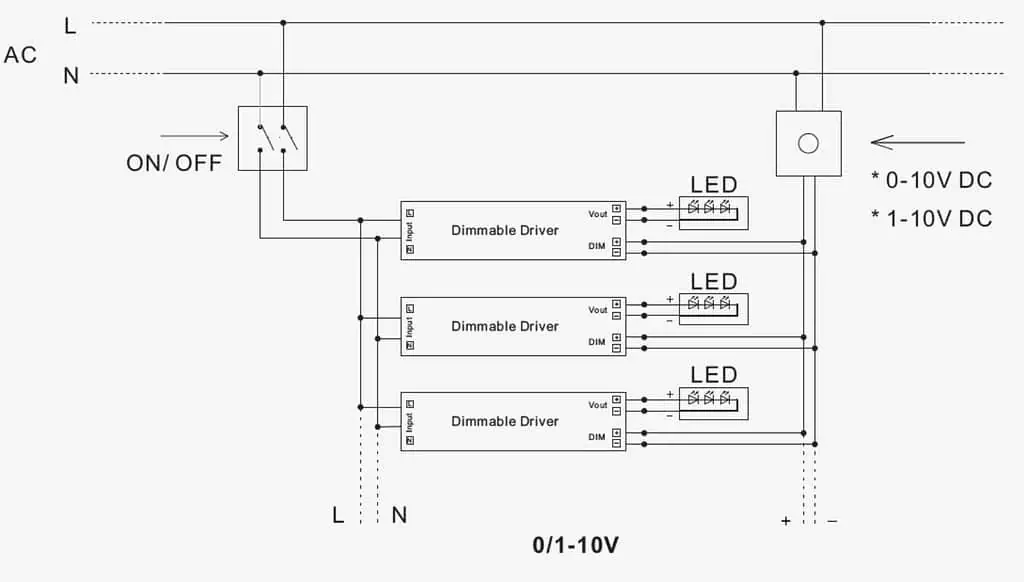
TRIAC Dimming
TRIAC stands for Triode for Alternating Current, and is a switch that is used to control power. When used in lighting applications, it’s commonly referred to as ‘TRIAC dimming’.
TRIAC circuits are widely used and very common in AC power control applications. These circuits can switch high voltages and very high levels of current in the two parts of an AC waveform. They are semiconductor devices, similar to a diode.
TRIAC is often used as a means of light dimming in domestic lighting applications and can even serve as a power control in motors.
TRIAC’s ability to switch high voltages makes it ideal for use in diverse electrical control applications. This means it can work to suit everyday lighting-control needs. TRIAC circuits are used for more than just domestic lighting, though. They are also utilized when controlling fans and small motors and in other AC switching and control applications.
If you are looking for a multipurpose control, we are sure you will find TRIAC a beneficial protocol.
TRIAC is high voltage (~230v) dimming. Wiring a TRIAC module to your mains supply (between 100-240v AC), you will be able to get the dimming effect you require.
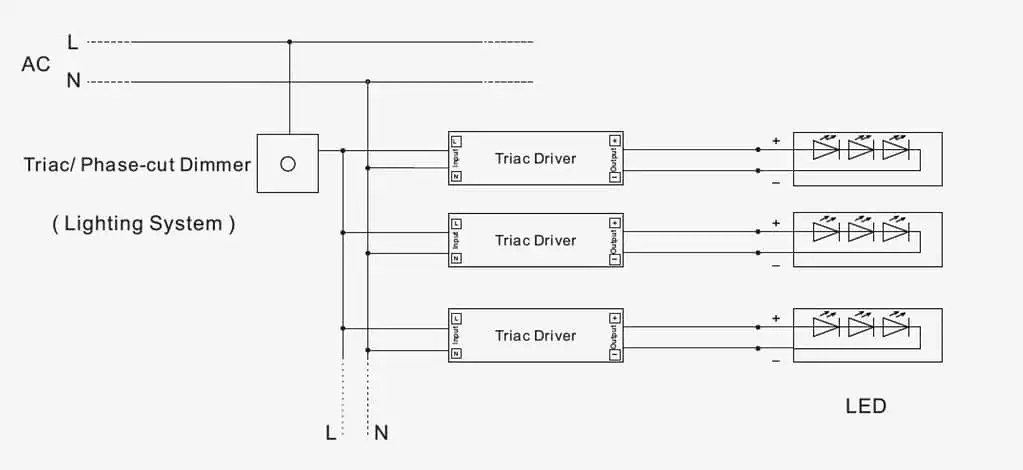
RF Dimming
Radio frequency (RF) dimming use a radio frequency signal to communicate with the LED controller to dim the color of your LED lights.
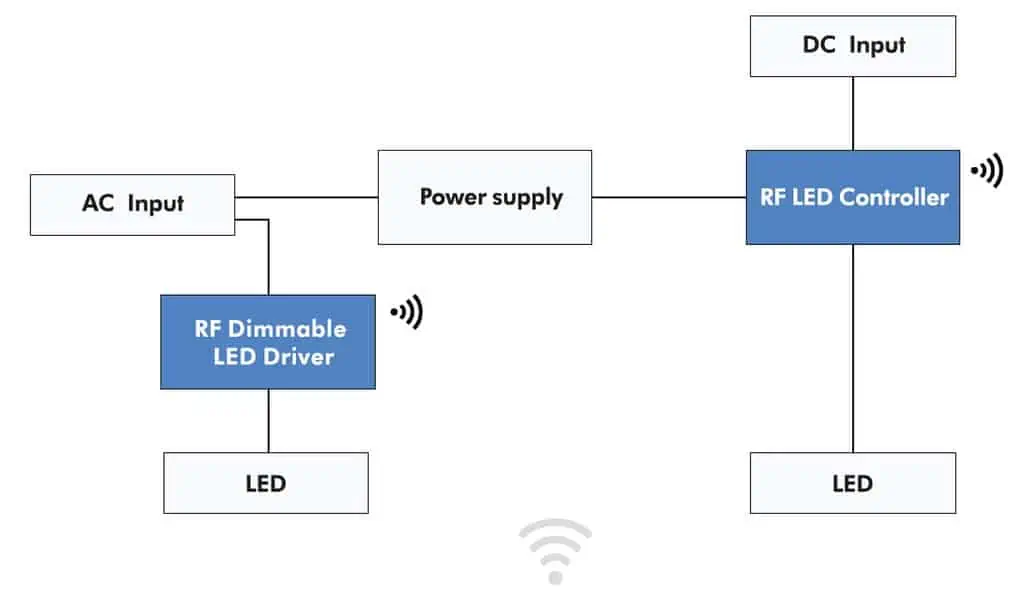
Bluetooth, WIFI, Zigbee Dimming
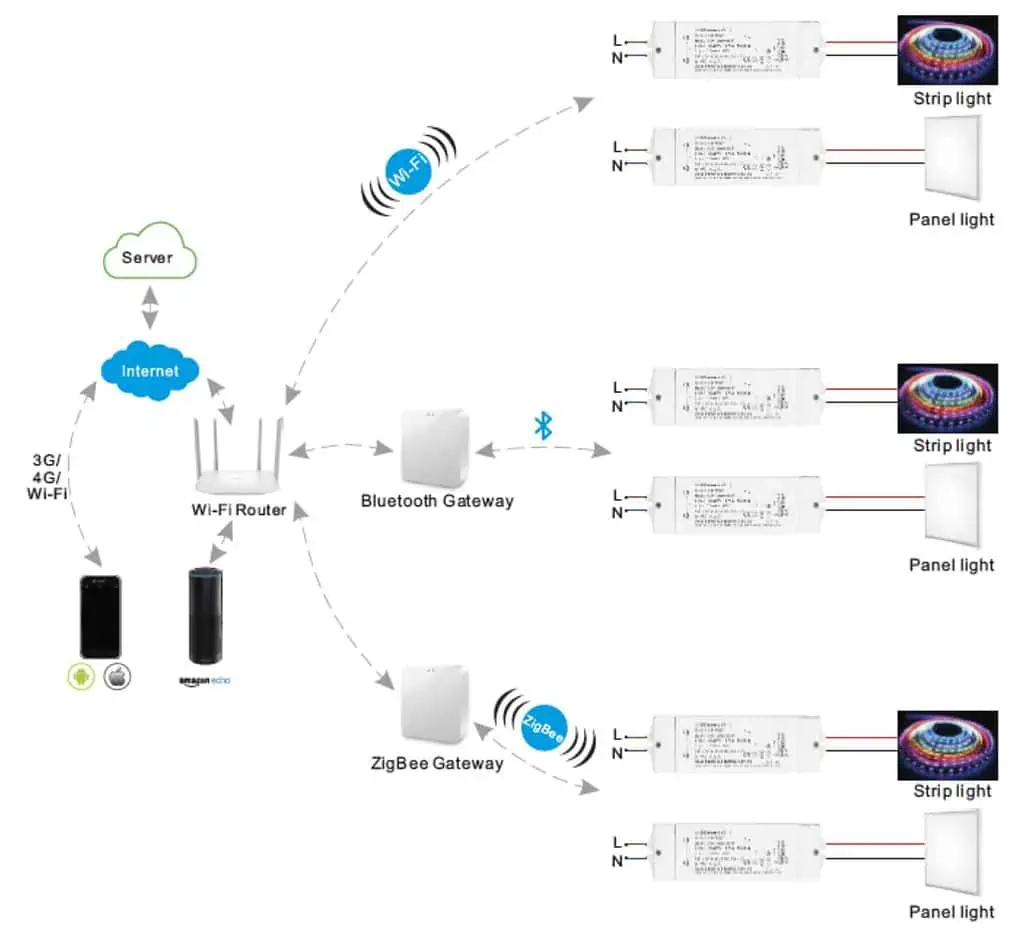
Bluetooth is a short-range wireless technology standard that is used for exchanging data between fixed and mobile devices over short distances using UHF radio waves in the ISM bands, from 2.402 GHz to 2.48 GHz, and building personal area networks (PANs). It is mainly used as an alternative to wire connections, to exchange files between nearby portable devices and connect cell phones and music players with wireless headphones. In the most widely used mode, transmission power is limited to 2.5 milliwatts, giving it a very short range of up to 10 metres (33 ft).

Wi-Fi or WiFi(/ˈwaɪfaɪ/), is a family of wireless network protocols, based on the IEEE 802.11 family of standards, which are commonly used for local area networking of devices and Internet access, allowing nearby digital devices to exchange data by radio waves. These are the most widely used computer networks in the world, used globally in home and small office networks to link desktop and laptop computers, tablet computers, smartphones, smart TVs, printers, and smart speakers together and to a wireless router to connect them to the Internet, and in wireless access points in public places like coffee shops, hotels, libraries and airports to provide the public Internet access for mobile devices.

Zigbee is an IEEE 802.15.4-based specification for a suite of high-level communication protocols used to create personal area networks with small, low-power digital radios, such as for home automation, medical device data collection, and other low-power low-bandwidth needs, designed for small scale projects which need wireless connection. Hence, Zigbee is a low-power, low data rate, and close proximity (i.e., personal area) wireless ad hoc network.

Final Conclusion
All LED strips are dimmable. But please note there are two types of led strip, constant voltage led strip, and constant current led strip. Constant current led strip must be used with PWM output signal dimmable led strip! For constant voltage LED strips, you can choose PWM or CCR output signal dimming power supply according to the project’s needs. And there are a lot of input signals, such as DMX512, DALI, 0/1-10V, TRIAC, WIFI, Bluetooth, RF, and Zigbee.
You can choose the suitable input signal considering the environment (installation, wiring), function, cost, and flexibility of later expansion.
LEDYi manufactures high-quality LED strips and LED neon flex. All of our products go through high-tech laboratories to ensure the utmost quality. Besides, we offer customizable options on our LED strips and neon flex. So, for premium LED strip and LED neon flex, contact LEDYi ASAP!
